We anchored between A-Train and Spirare in Nasasabo Bay, inside Dakuniba Pass. Our first evening started out peacefully.
We had a lovely sunset with a rainbow of colours.
At dusk, we noticed hundreds of birds flying overhead. We later determined they were actually bats, about the size of a large man’s fist with a wide wingspan. It was amazing to see how many there were and their constant squeak was eerie. Think of the movie “The Birds”!
Flying ants and little bugs started buzzing around us in the cockpit. We retreated to our saloon and closed all the screens to avoid them. Many of the the bugs seemed to have died by morning, leaving a mess to clean off the deck. We heard dogs howling on shore that night too.
Roosters started crowing about 4am but I managed to fall back to sleep for a while. Dawn was surreally calm in the bay. The bats had all gone to bed and it was very quiet around sunrise.
Suddenly, we saw A-Train pulling their anchor. They reported their freezer had quit. They had to head back to Savusavu before the winds picked up and all their frozen food started to thaw. They could put their food in the Waitui Marina freezer while they saw to the repair. We were sorry to see them leave.
We had watched a couple men in a small boat go passed and then disappear in the mangroves. They returned with a pile of wood in their boat.
Sergio and Joanne had been to this anchorage twice before. They suggested visiting the family that live in the houses perched over looking the bay. We tied our dinghy to a mangrove tree with part of its trunk and roots submerged in the salt water. Mangroves surround the bay, except where someone has cut them down.
We met George, Charlie, Charlie’s son named Dickie and a friend. They invited us to sit on the mats in their house and have a chat. We removed our hats and struggled to sit cross-legged, a position customary at Fijian gatherings. Thankfully, Joanne demonstrated the gift of making easy conversation. She asked about the William and Margaret, a couple they had met on a previous visit, and were told they had split up and Margaret had moved to Labasa.
Their 86 year old aunt owns the land and lives in another house on the property with their mother, her sister. We did not meet them on this visit.
We discussed doing a sevusevu ceremony with the chief in the next bay over, but we were told it was not necessary. We were in a bay surrounded by property owned by this family and had done the right thing calling in on them. They appreciated this courtesy from cruisers anchoring in their bay.
I enquired about all the dogs on the property. There had to be 10! The brothers told us they use the dogs for hunting wild boar. I got the impression the men enjoyed hunting and I bet the dogs did too! Maybe the hunt was the reason the dogs were howling at night! 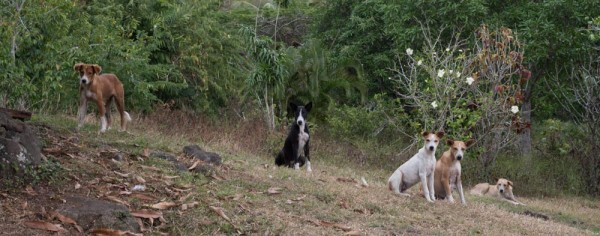
The men also went fishing near the reef with nets. Fairly frequently, they cross the strait to Taveuni Island in their so-called “long boat” for supplies or to pick people up from the ferry dock. The crossing is probably about 12 miles and often a wet ride. The swells can be 2 to 3 metres! We used a tarp to shield the passengers in the bow from the waves. Not much fun, I would say.
I asked about the bats and was informed they are “fruit bats”. They can devastate the family’s fruit crop, so the family have to pick the fruit when it is still a little green.
The brothers kindly gave us a few dozen oranges, some lemons and a couple grapefruit as we retreated to our dinghy.
Joanne and Sergio came over for a sundowner. Joanne prepared a large bowl of hot buttered popcorn, one of her specialities. (Another is baking cakes!) Together, we sipped a Tequila and freshly squeezed orange juice from the oranges we had been given that day. We sat in the cockpit until it got dark and kept the light off so that we would not attract bugs. It seemed to work but it was so breezy, they may not have bothered us anyway.
Chores on the boat and photo editing kept us busy during the day. There is always a boat project. Serge kindly offered advise on alternator and water pump belt tensioning and such.
I tried to keep up with backing up and editing my photos when my computer was charged. In Nasasabo, we did not get wifi reception (we had chosen the wrong provider) so I could not work on our blog. For some reason, we were not even getting reception with our Iridium Go satellite service for a couple days. We could use our Delorme In Reach which works off the same satellites, something strange there. We resorted to using the SSB radio to send a few messages and got a GRIB file, but it only worked at night.
The water in the bay was not very clear, typical of a bay surrounded by mangroves, so we were not inclined to go swimming off the boat. Serge announced he was heading out to the reef in his dinghy to go snorkeling. He managed to spear a lobster. It was probably 3 pounds and almost all tail! Wow!
Monty and I motored out to the reef in our dinghy and snorkeled for a half hour or so, until we got cold. Some of the coral was dead and there were not that many fish. All the same, it was nice to get off the boat for a swim.
The next day, we all decided to go ashore again. I brought a couple prints of photos I had taken of the brothers and their son (thanks, Christian, for that idea). We also gave them with some fish hooks and line. Serge and Joanne brought some LED lights and a book. It is hard to know what they would like or be able to use. Cruisers used to recommend bringing them batteries but then you see them littering the beach. Reality!
With the family’s permission, we went for a walk to the copra shed through their property. The trail meandered through a jungle-like forest. We passed hundreds of coconut trees, littered with piles of husks on the ground around them. Any open slopes and meadows were planted with taro and cassava. We noticed many fruit trees along the path including grapefruit, orange, kumquat, lime, lemon, mango and banana trees. The land is very fertile with dark volcanic soil.
We came across a bay stallion tethered in one clearing and a grey gelding in a meadow further along. The horses were likely used for wild boar hunts. We had heard the dogs barking like mad the previous night!
They munched the grass, not much interested in us, maybe tired from a hard ride. Their forelocks (mane) were full of little burrs. It must be painstaking to brush them out. Memories of brushing the buzzies out of our horses’ manes and tails came back. My horsey friends will relate.
We eventually reached the copra shed which was smoking away. The mature nut of the coconut is dried and cut to make copra. Commercial grade coconut oil is produced from the copra.
As we returned to the houses, the brothers introduced their mother. They had organized gifts of cassava, taro and bread fruit. We had no idea how to cook any of it, but Joanne assured us she would give us some advice.
They also offered wild boar they had hunted the previous night. It was all cut up, ready to be cooked on their wood-burning fire. They had a number of big strong men to feed, so we declined the offer. It was tempting!
For four nights, we stayed anchored in Nasasabo Bay waiting for the strong winds to ease. We heard the winds were blowing 20 to 25 knots. We could see tremendous surf rolling over the reefs. We encountered a little swell in the usually flat calm bay but the wind did howl over the hills at times. We were glad our anchor was well set in the bay’s muddy bottom.
One morning, we heard John on Tiger, a boat from Seattle, talking on the VHF. They were in Viani Bay. I radioed them and asked how they liked it. They said it was a nice, large bay and something was going on every day. We could arrange to go snorkelling and scuba diving from there too. Apparently, they also get cell reception!
Nasasabo was an interesting stop, but when will conditions allow us to move on?

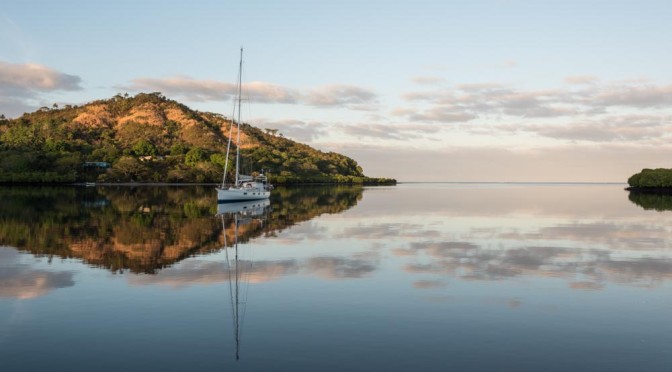
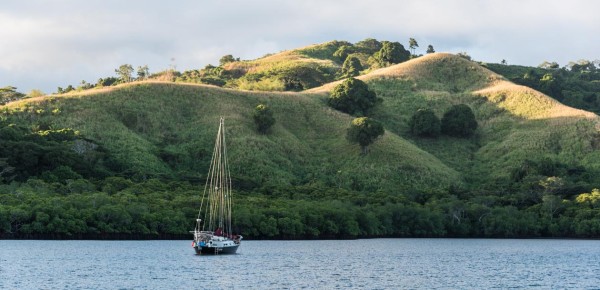
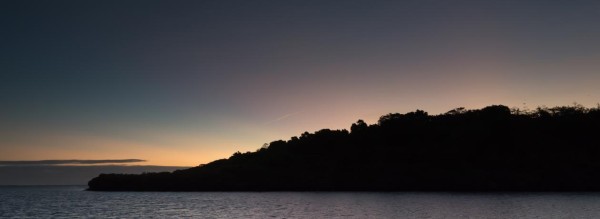
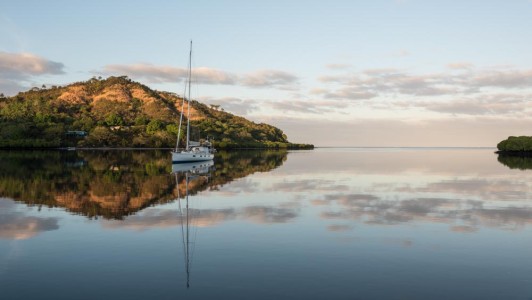
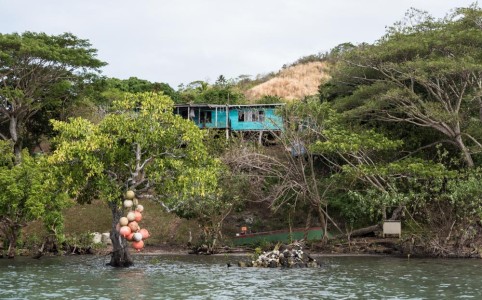
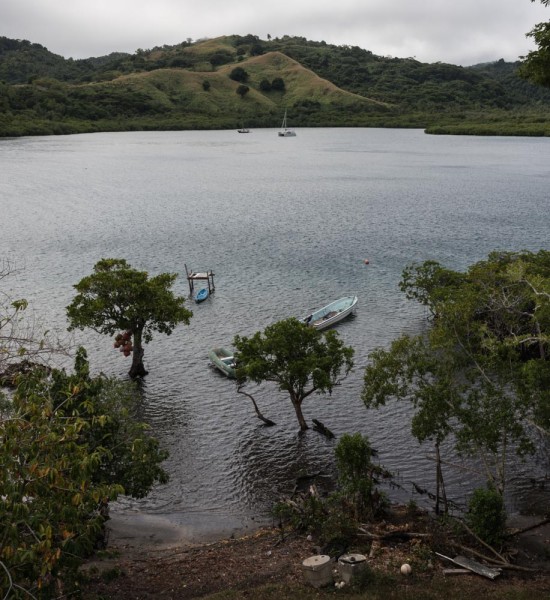
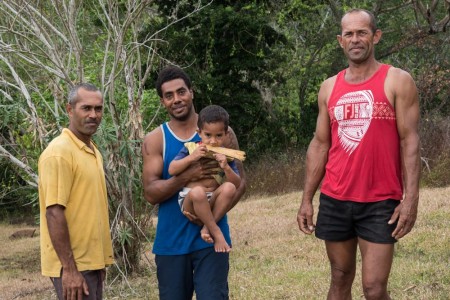
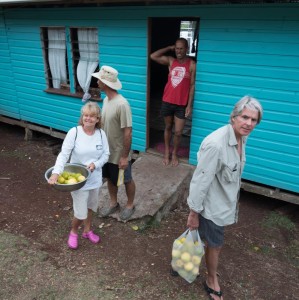
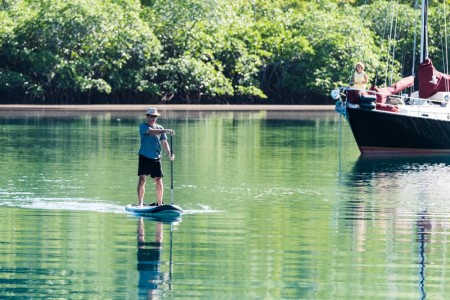
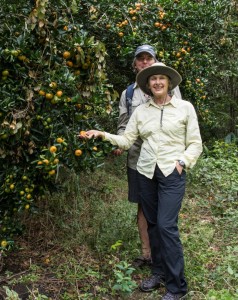
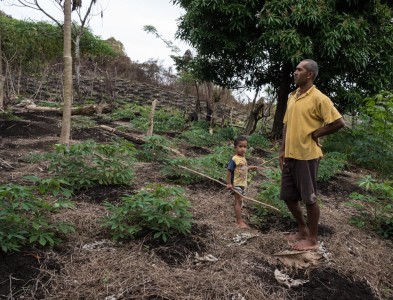
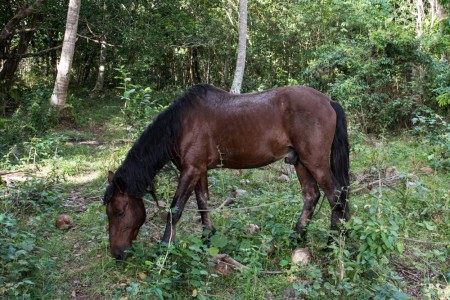
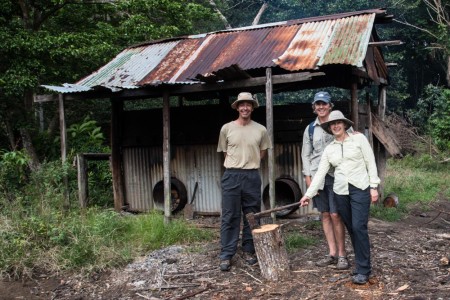
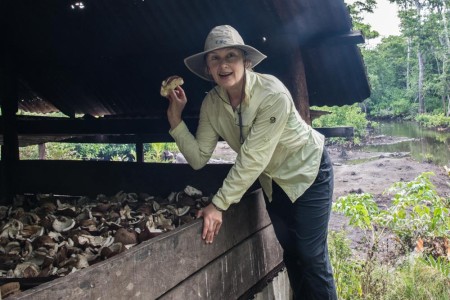
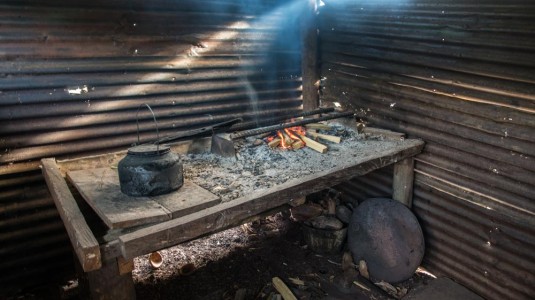
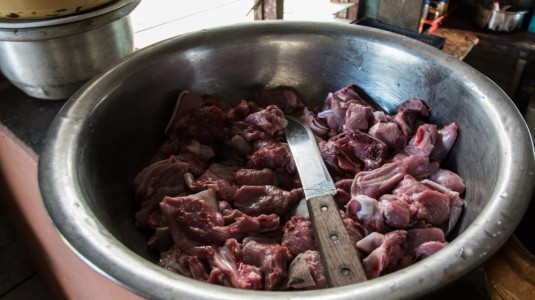
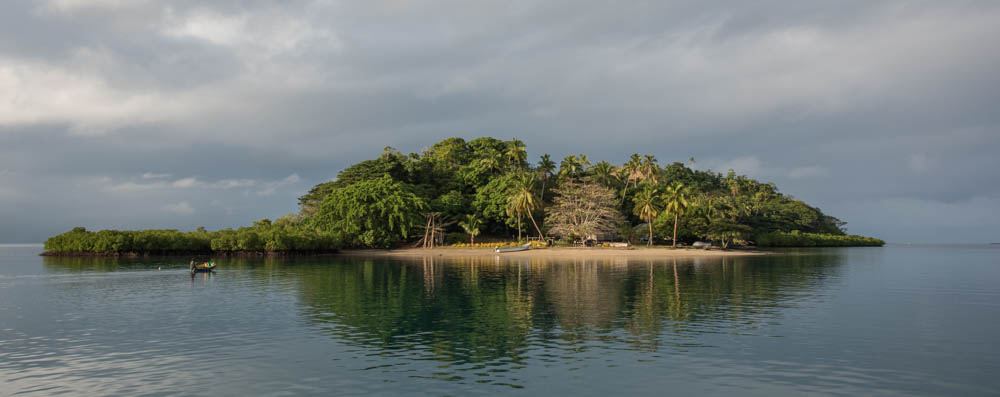

2 comments
Ahhh the boating world…
How’s business and the dogs?